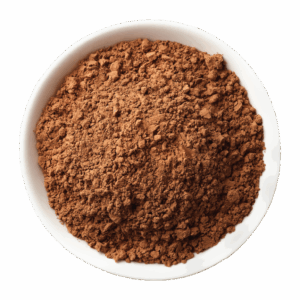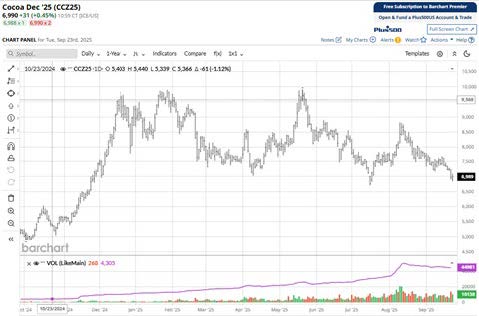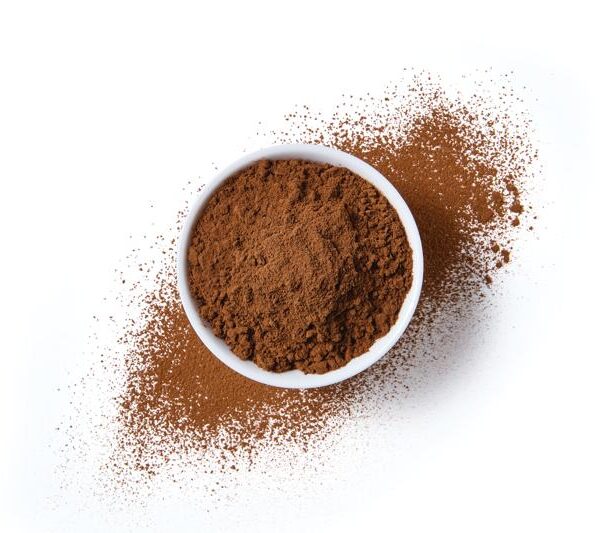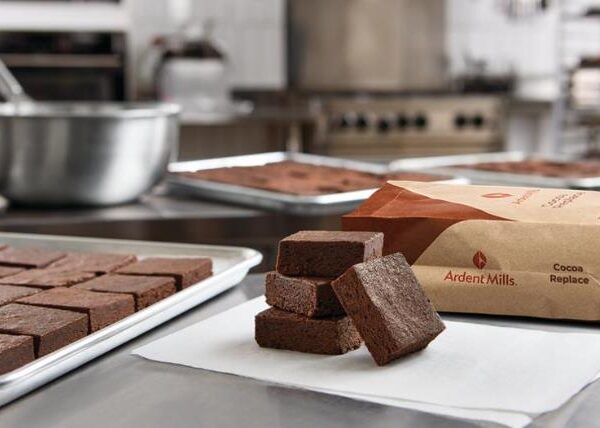
Facing the Cocoa Powder Crisis
Although cocoa is an essential ingredient for color and flavor in chocolate products, industry wide concerns have risen due to its current climate and cost crisis becoming unmanageable.
According to Bloomberg News, cocoa powder prices have surged about 16% in the U.S. over the past year, nearing record highs (Bloomberg, 2025).
This begins with supply constraints. According to IFPC’s September Commodity Report, West African cocoa regions are experiencing a record-breaking drought resulting in the Ivory Coast arrivals decreasing by 2% year-over-year (IFPC, 2025).
While the world faces global supply shortages, there is still a need for cocoa on the consumer side, which has forced manufacturers to seek alternatives to maintain product quality and control costs.

ICE/U.S. (10.23.24-9.23.25) Cocoa Market from IFPC’s September Commodity Market Report
Industry Response
The global cocoa crisis is causing manufacturers to respond as the major chocolate makers are shrinking product sizes, adding fillers, or promoting non-chocolate items.
In fact, Mars has reduced the cocoa amount and increased their price from $5.00 to $8.40 for their signature Milk Chocolate Easter Egg (Innova, 6). Despite the price hikes and pack size shrinkage, consumers are still willing to pay more for chocolate, driven by cultural loyalty to holiday tradition.
The National Retail Federation projects that sales of Halloween candy will increase to $3.9 billion in 2025, compared to $3.5 billion in the previous year (National, 2025). Additionally, Innova Market Insights reports that 1 in 4 consumers globally say they will still buy chocolate confectionary if the price increases due to impact of climate change (Innova, 7). However, with these recent price increases, the question remains: how much are consumers willing to spend in the future?
Exploring Alternatives
Other manufacturers are seeking alternatives without raising prices, like developing cocoa-free chocolate or promoting non-chocolate products. According to Bloomberg News, Bridget Vickers, Senior Chief Instructor at the Institute of Culinary Education, noted that producers may be shifting from “fudgy, dark” products to lighter flavors using other ingredients (Bloomberg, 2025).
On the other hand, the use of food coloring, coffee, and other ways to mimic chocolate flavor can cause concern for companies wanting to avoid additives and speculation beyond cocoa. The industry is rising to the challenge of addressing potential cocoa shortages, but with so many different replacements on the market, it can be difficult to decide which is the right choice.

Introduction: Ardent Mills Cocoa Replace Solution
In efforts to minimize costs while keeping quality, IFPC is now distributing Ardent Mills® Cocoa Replace.
This cocoa replacement is a milled wheat that is neutral, consumer-tested, and captures the flavor and appearance recognized of alkalized cocoa powder. The cocoa replacement is also label friendly, being a single-ingredient solution that helps minimize drastic label changes (Ardent, 2025).
IFPC’s September report shows wheat production estimates are up by more than six million metric tons. With a stable supply grown and milled in the U.S., this wheat-based cocoa replacer can help lower costs across the board (IFPC, 2025).

Performance & Applications
Ardent Mills® Cocoa Replace can substitute up to 25% of the cocoa in various baked goods. The replacer helps retain color intensity, texture, and mouthfeel while incorporating complementary cocoa flavored notes. Various bakery products, such as cakes, muffins, brownies, cookies, pancakes, waffles, quick breads, and pumpernickel bread, have received approval through sensory validation and consumer testing (Ardent, 2025).
For internal evaluation, the IFPC sensory panel conducted an assessment using both a standard baked brownie and a version formulated with 25% less cocoa powder, using Ardent Mills® Cocoa Replace to restore flavor, color, and texture. As a group, the panelists could not distinguish the difference between the two brownies or correctly identify the one with less cocoa.
Initially intended for bakery use, this advanced wheat-based flour is now being trialed for its potential applications in other manufacturing sectors, including confectionery and powdered beverage production.
IFPC's Support
With an in-house panel of over fifty participants and a team of food scientists with 50+ years of research development experience, IFPC brings science-backed solutions to customers. IFPC is here to work alongside your product innovations with decades of experience working with cocoa blends in different markets.
Ready to learn more about Ardent Mills® Cocoa Replace?
For more information about this product and to further discuss with a category manger, please contact us at info@ifpc.com.
Sources:
Ardent Mills. (2025). Cocoa Replace. Ardent Mills. https://www.ardentmills.com/products/egg-and-cocoa-replacements/cocoa-replace/
Bloomberg News. (2025, July 9). Chocolate makers burned again as shortages hit cocoa powder. Bloomberg. https://www.bloomberg.com/news/articles/2025-07-09/chocolate-makers-burned-again-as-shortages-hit-cocoa-powder
IFPC. (2025, September 30). Commodity Market Updates – September 2025. IFPC. https://ifpc.com/commodity-market-updates-september-2025/ [ifpc.com]
Innova Market Insights. (2025). Cocoa: Current global challenges & future opportunities [Slides 6-7].
National Retail Federation. (2025, September 18). NRF Consumer Survey Finds Halloween Spending to Reach Record $13.1 Billion. NRF Press Release.



